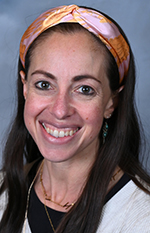By Ilanit Zakowski

LOS ANGELES — They were always there- at school plays, birthday parties, sitting amongst us in the audience at Yom Hashoah memorials. They were in our homes, telling us to finish every last drop of food on our plates, to be careful everytime we left the house. As a child, on trips to Israel, I’d see them casually waiting with young teenagers at bus stops, both tattooed on their arms, but for different reasons,…
We took it for granted- after what they lived through, we thought they were immortal, that they’d always be there. After all, as my mother always said “to survive the Holocaust, you had to be made of something different.” It is true, they were superhuman.
Shortly before my Bubbie passed away, I remember her saying “By the year 2025, there will be very few survivors left.” Now, I recall those words every time there is a survivor in my presence. I make a point to bring my children over, introduce them, and have them shake hands in an attempt to forge a bond that will forever remain, even once they are gone.
Who ever thought we’d be living in a time where the term ‘survivor’ has taken on a new meaning? Shortly after October 7th, when a friend of mine told her children she was interviewing a survivor for a work project, their response was “a Nova survivor or Holocaust survivor?”
I can be sure survivors of the Holocaust never imagined there’d be another kind of ‘survivor’ in their lifetime. Yet, the most powerful footage I’ve seen in the past year and a half is of Holocaust survivors meeting with October 7th survivors, ensuring the younger generation that they too can surely move on.
A few weeks ago, I brought a few of my students to visit and interview a 98-year-old survivor of Auschwitz, as part of a project they are preparing for Yom Hashoah. Although Mary did not directly answer all the questions the girls asked, they were in awe of the optimism and hope that illuminated as she spoke, bringing light to a situation that would have left many hopeless.
The girls felt charged with a new sense of responsibility to pass on Mary’s stories and the life lessons she shared to all those they will encounter in the future. As we were leaving, a student asked “Mary, during the war what kept you going with the will to continue living?” Although Mary grew up with a secular upbringing in Budapest, she responded “in the camps I prayed. I prayed and I knew God was listening. My mother, a non-religious woman, told me that this is the story of our people- we suffer but have lived through it and have gotten this far- we will continue to survive and live a beautiful life when we’re out of here.”
After all she’s been through, hearing Mary’s words of hope and the pride she takes in being a part of an irrepressible nation left us speechless and filled with emotion.
This empowering message made me think of the words of Dovid Hamelech, in Perek 118 in Tehillim, the ‘grand finale’ in Hallel. He writes “Lo amut ki echye ve’asaper ma’aseh ya”- “I will not die, for I will live and tell over the acts of God.”
I first gave thought to these words when I was 18, on a trip to Poland. The movie Escape from Sobibor was playing on the bus throughout our journey. Here, I learned about the heroic uprising and escape of hundreds of inmates from Sobibor in October 1943. I delved into the words of this pasuk and discovered that they are here to teach us that despite enemies surrounding us, the Jewish people live. On a deeper level, we desire to live in an active, purposeful, and meaningful way, spreading these messages of faith, resilience, hope and thanksgiving in Hashem.
In a recent podcast I listened to, Rabbi Simon Jacobson, noted speaker and scholar, reflected on how he personally manages to stay connected and inspired by the messages of the Lubavitcher Rebbe, even long after his passing. Rabbi Jacobson explained that just as we believe Hashem’s Torah is eternal, so too, we believe the Tzaddikim and Gedolim who represent the Torah’s messages are everlasting. He stated “If it’s emes (the truth), it’s always emes, whether the Rebbe is there or not. Does that make him less real…when it’s not on your terms?”
And he went on to compare the Rebbe’s teachings to the messages of survivors, whose stories we so cherish. Their physical absence doesn’t represent their everlasting legacy. He concluded with a Ba’al HaTanya teaching- our lives consist of love of the almighty, reverence and faith. These teachings and the people who represent them are eternal.
We are entering the Chag where we fulfill the mitzvah of “Vehigadata Lebincha”- telling our children. The chain that has remained adamant in telling the story of Yetziat Mitzrayim will remain unbreakable as we retell the stories of the Holocaust. Yes, the number of survivors are dwindling, but the next generation is not- we live on and we tell. And our children will do that, and their children. The end of an era does not mean the end of their story- our mesorah of storytelling the wonders of our God and the people that comprise his invincible nation lives on.
*
Ilanit Zakowski is a Jewish educator, teaching and touching the lives of children of various ages in the greater LA area. She is also an English as a second language teacher and taught English to Israeli children during the decade she lived in Israel.